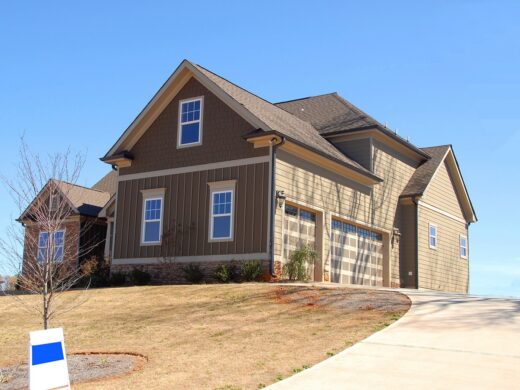Ways to invest in real estate for retirement, Home improvements, Building remodeling costs, Property for older people
6 Ways to Invest in Real Estate for Retirement
19 Jan 2023
If you are nearing retirement, or just simply trying to plan for the future, there are many different ways to invest your hard-earned money. Investing in real estate is a popular choice for retirement planning, as it can provide you with a steady income and potential tax advantages. Here are 6 ways to invest in real estate for retirement:
Purchase Rental Property
One of the most common ways to invest in real estate is to purchase rental property. Not only does owning a rental property provide a stream of income during your ownership period, but it is also a valuable asset that can be liquidated when larger sums of money are needed.
Pros:
- Steady stream of income with long-term tenants
- Generally more reliable, with a higher than average return on investment, than the stock market
- Potential tax benefits
Cons:
- Potential risk if rented to problem tenants
- Large capital required to purchase
Pay Off your own Mortgage
If you already own a home, one additional way to invest in real estate is to pay off your own mortgage. This essentially makes you the landlord of your own home and will provide you with a steady stream of income and the sense of security that comes with it. Once all or most of the mortgage has been paid off, you can also use the equity that you have accumulated to purchase a rental property or another form of investment.
Pros:
- No risk or volatility associated with this type of investment
- Can use equity to purchase additional investments
From an expert’s perspective:
Fant Camak, realtor at Coldwell Banker-Caine (www.sellingsparklecity.com), has advice for those looking to secure their retirement savings – invest in the real estate they own. With a mortgage-free home and other investments, individuals can look forward to retirement with more financial freedom.
As Fant puts it: “Investing in your home by becoming mortgage-free is one of the best ways to secure a future of independence during retirement.” It’s important to plan ahead and look for ways to ensure your retirement funds are secure – owning real estate as an investment could provide that peace of mind.
Consider a Real Estate Investment Trust (REIT)
Investing in real estate can be a great way to build retirement savings, and Real Estate Investment Trusts (REITs) are an excellent opportunity to do so. REITs invest in various types of real estate such as apartments, industrial spaces, self-storage units, and shopping malls. They offer investors the chance to diversify their portfolios while still investing in tangible assets like property.
REITs typically provide higher dividend payouts than traditional stocks, offering steady income streams even during economic downturns. Plus, they are easy to access since they are traded directly on major stock exchanges. Investing in a REIT can thus help build long-term retirement savings by protecting portfolio values and providing stable dividends over time.
Pros:
- Easy to access and trade on major stock exchanges
- High dividend payouts
- Potential for capital gains
- Less Risk through diversification
Cons:
- Higher fees than other investments in real estate
- Less control over the investment since it is not directly owned by you
- Taxed as regular income
Real Estate Syndication
Real estate syndication is a great option for those who are looking for a hands-on approach to investing in real estate. It is essentially an arrangement where two or more investors pool their resources together to buy, develop and manage real estate projects.
The investor’s individual contributions are pooled into one fund which is then used to purchase the property. This allows the investor to own a larger piece of property with a lower investment, as well as reduce their own risk by diversifying their portfolio.
Pros:
- Ability to purchase a larger amount of property with less money and less risk
- Opportunity for higher returns on investments due to economies of scale
- More control over the management of the project
Cons:
- Higher risk since you are investing with other parties
- Complexity of organization and management
- Higher fees than other investments in real estate
- Taxation on profits can be higher than other forms of investment income.
Fix and Flip Properties
Another option for investing in real estate is to purchase a fixer-upper or distressed property, renovate it, and then resell it for profit. This type of investment is particularly attractive in areas where there is a lot of potential for appreciation and high demand from buyers. It is also a great way to make money on the side or as a full-time endeavor, depending on your commitment level.
Pros:
- Potential to make a large return on investment
- Can enjoy the satisfaction of transforming an inferior property into something beautiful
- Ability to use creative solutions to maximize profits
Cons:
- Requires a significant amount of capital upfront as well as time and effort
- High risk due to market fluctuations and other factors affecting pricing
- Time-consuming process from purchase to sale
- Possibility of incurring unexpected costs during the renovation period
No matter what type of real estate investment you choose, it is important to do your research and understand the specifics of each option before investing. This will help ensure that you make informed decisions and select investments that are right for you and your retirement goals. With a variety of options available, real estate can be a great way to build long-term retirement savings.
Comments on this Ways to Invest in Real Estate for Retirement article are welcome
Mortgages and Home Finance
Mortgages Posts
How to improve your life with equity release

How to Fund Your Home Improvement Using Equity Release
Pros and cons of 15-year vs. 30-year mortgage
Are You in the Gray Area in Your Mortgage?
Building Articles
Contemporary Properties – a recent selection from the e-architect website:
Design: Strom Architects
Ghyll House, East Sussex Property
Sea Breeze, Camber Sands beach, Sussex, England, UK
Design: RX Architects
Sea Breeze on Camber Sands beach, East Sussex
Comments / photos for the 6 Ways to Invest in Real Estate for Retirement page welcome








